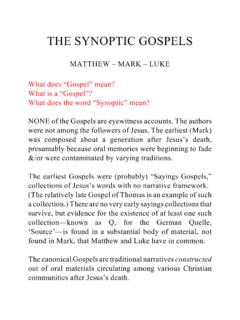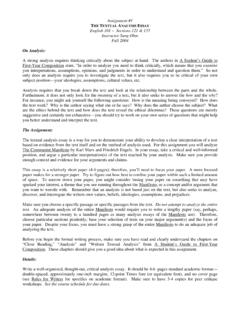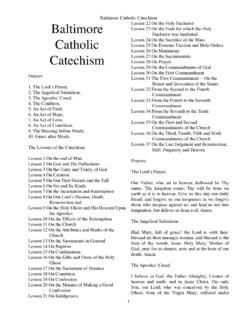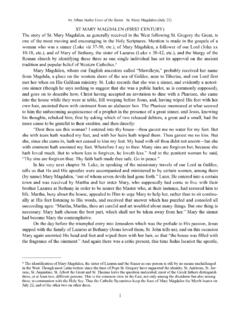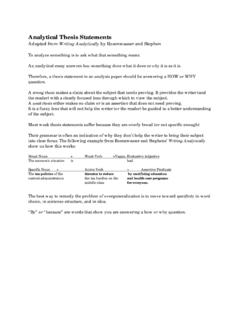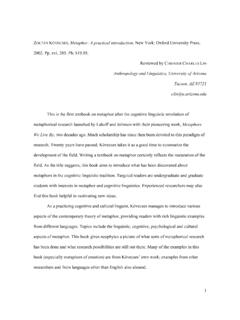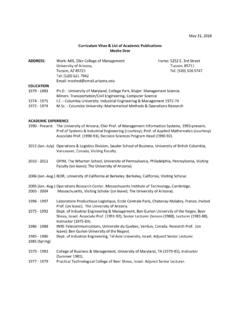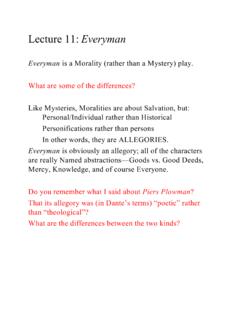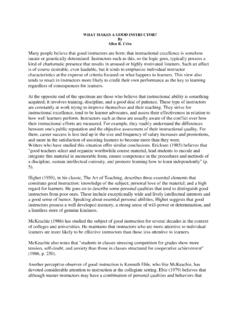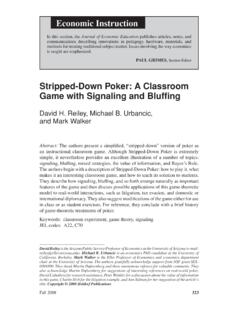Transcription of Defining Space and Place - University of Arizona
1 Vinson 1. SVR Event Theoretical Considerations of Space and Place The purpose of this handout is to review some scholarly approaches to Space and suggest ways for you to introduce these ideas to your students. Defining Space and Place Michel De Certeau distinguishes Space from Place in his influential text, The Practice of Everyday Life. He explains that a Place is the order (of whatever kind) in accord with which elements are distributed in relationships of coexistence ; a Place is thus an instantaneous configuration of positions. It implies an indication of stability (117). For example, the University of Arizona is a Place .
2 It is located in a specific region of Tucson, with stable buildings made of durable materials. It is a campus ordered by buildings that hold colleges, departments, and programs, each with their own organizational framework for staff, faculty and students. These diverse elements of the University are consciously ordered and designed to assist with the functioning of the education process in this Place . Contrary to Place , De Certeau explains that [a] Space is composed of intersections of mobile elements . (117). On any given day the University of Arizona is a Space . It is composed of students learning (or sleeping, texting, giggling) in the classroom, speakers calling out to the crowds on the mall, teachers hurrying to office hours, delivery trucks moving across campus streets, etc.
3 Though the University is designed as a Place for education, that is not what always occurs in the Space of the classroom, the Space of the mall. Or sometimes, it is exactly what occurs. In this sense, Space is a practiced Place (117). De Certeau offers the example of people walking on the street. Pedestrians transform the street from a Place that is geometrically defined by urban planning into a Space (117). While a specific street is a Place with clear material aspects, (asphalt or dirt, sidewalks or no sidewalks, a straight path or a curvy one), that do affect the kinds of activity that can occur on it, these material aspects do not determine for certain what will take Place on it.
4 For example, a pedestrian could walk on and off the pathway, turn right or left at another street, draw on the sidewalk with chalk, plant things in the dirt, etc. Distinguishing between Space and Place in this way is important, especially when considering the relationship between Space , power, and social relations. The Political and Social Implications of Space : Power and Resistance Edward Soja, in his book, Postmodern Geographies: The Reassertion of Space in Critical Social Theory, argues that while Space in itself may be a primordially given, the organization, and meaning of Space is a product of social translations, transformations, and experience (80).
5 He coins a term to capture the dynamic nature of Space , calling it spatiality. Just as De Certeau's definition of active Space distinguished it from a stable notion of Place , Soja's definition of spatiality divulges notions of naturalness from Space and suggests that spatiality is a dynamic that affects our life experiences. Indeed Soja sees an essential connection between spatiality and being (119). If we accept that we are affected by the spaces we inhabit, traverse, negotiate, and avoid, then we must come to understand how those spaces are constructed, organized, and imbued with power.
6 Michel foucault maintains that power has its principle not so much in a person as in a certain concerted distribution of bodies, surfaces, lights, gazes; in an arrangement whose internal mechanisms produce the relation in which individuals are caught up (4). While analyzing the architecture of a prison, foucault finds that a strategic structure or organization of Space can lend itself to maintaining power dynamics and hierarchal social relations. Rhetorician Roxanne Mountford argues that Spaces have heuristic power over their inhabitants and spectators by forcing them to change both their behavior.
7 And, sometimes, their view of themselves . (50). Vinson 2. SVR Event For example, the Space of any given classroom may persuade students to change their behavior or their view of themselves in relation to the person at the front of the room (typically the teacher). If the classroom is arranged with the teacher's station up front and the chairs in straights rows from front-to-back, then the set-up might encourage students to focus attention up front, to listen instead of talk, to be silent, to do individual reflection and work. Furthermore, they may be encouraged to view themselves as less important (or smart) than someone standing in the front, or as less accountable than someone sitting in the front row.
8 These considerations of the relationship between spatial organization, discipline, and social relations may lead us to ask: How are social relations maintained or constructed in certain spaces? What elements of a Space are repressive? What elements are creative? How do we avoid constructing spaces that create/perpetuate social inequities? While these questions are important to ask of places, we must remember the dynamic nature of both power and Space . foucault maintains that power is relational. At no time and in no Place are power relations stable. This instability leaves room for resistance.
9 This point is especially important when considering Space . Remember De Certeau's assertion that Space is dynamic, relational, and variable. Even though a Space may be designed for a positive practice (as schools are designed for learning) or for repression (as prisons are designed for disciplining), the action is not determined by the construction of those places. They are, at any moment spaces alive with the potential for social interpretation and use. This could lead us to ask: What is the purpose or function of this Space as it is now? How could this Space be manipulated, changed, revised for another purpose?
10 How could the revision or re-interpretation of this Space effect how people act in it? Ideas for Introducing Spatial Analysis to Students: 1.) Have students map the University of Arizona . Determine as a class the center of the University (some will say Old Main, the Mall, the Admin Building, or the Student Union). Then, assign pairs a building to find. For example, students could search for McClelland Hall (home of the Eller Business College) or the Women's Studies department. As they leave the classroom to begin their search, give students a handout with material elements that are important to take notes on ( the distance from the center of the University , the location of the building, the material elements that construct the building, the accessibility of the building perhaps even consider encouraging students to only use wheelchair ramps).
